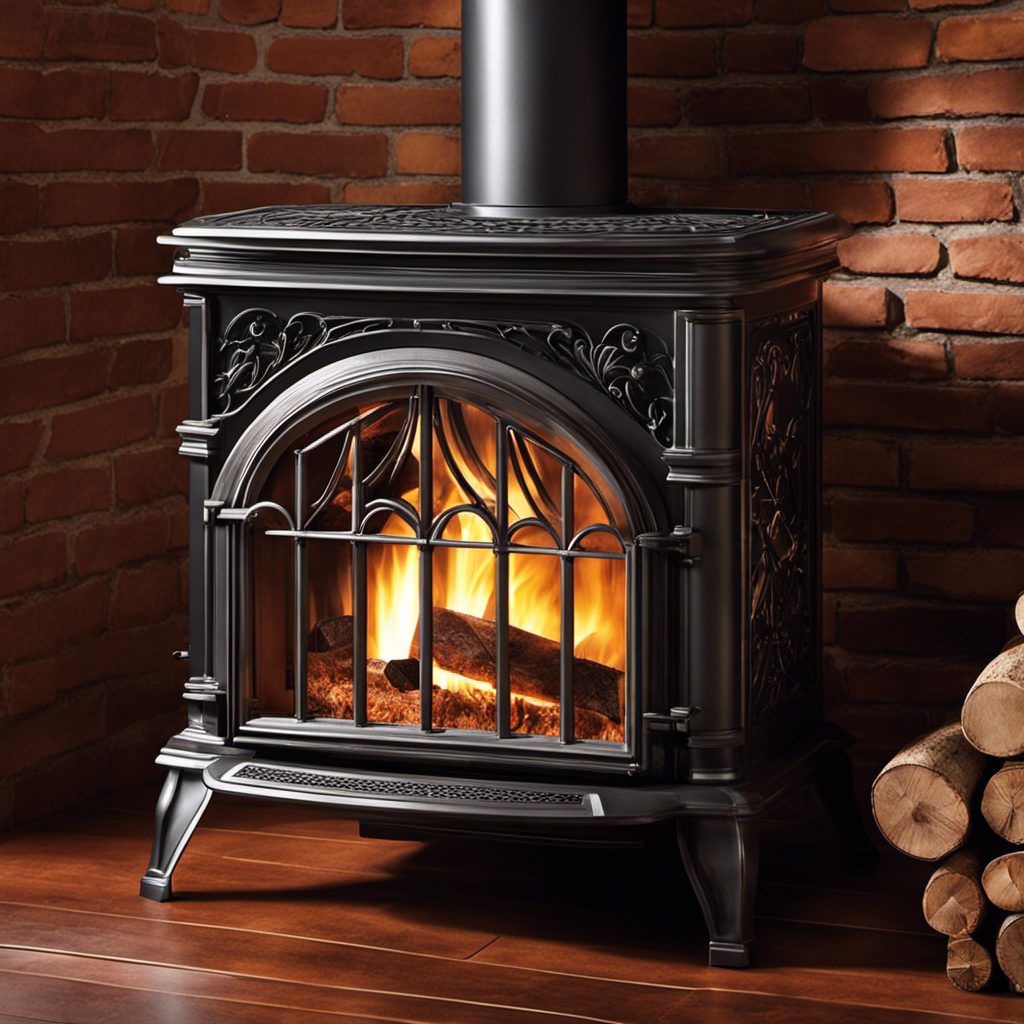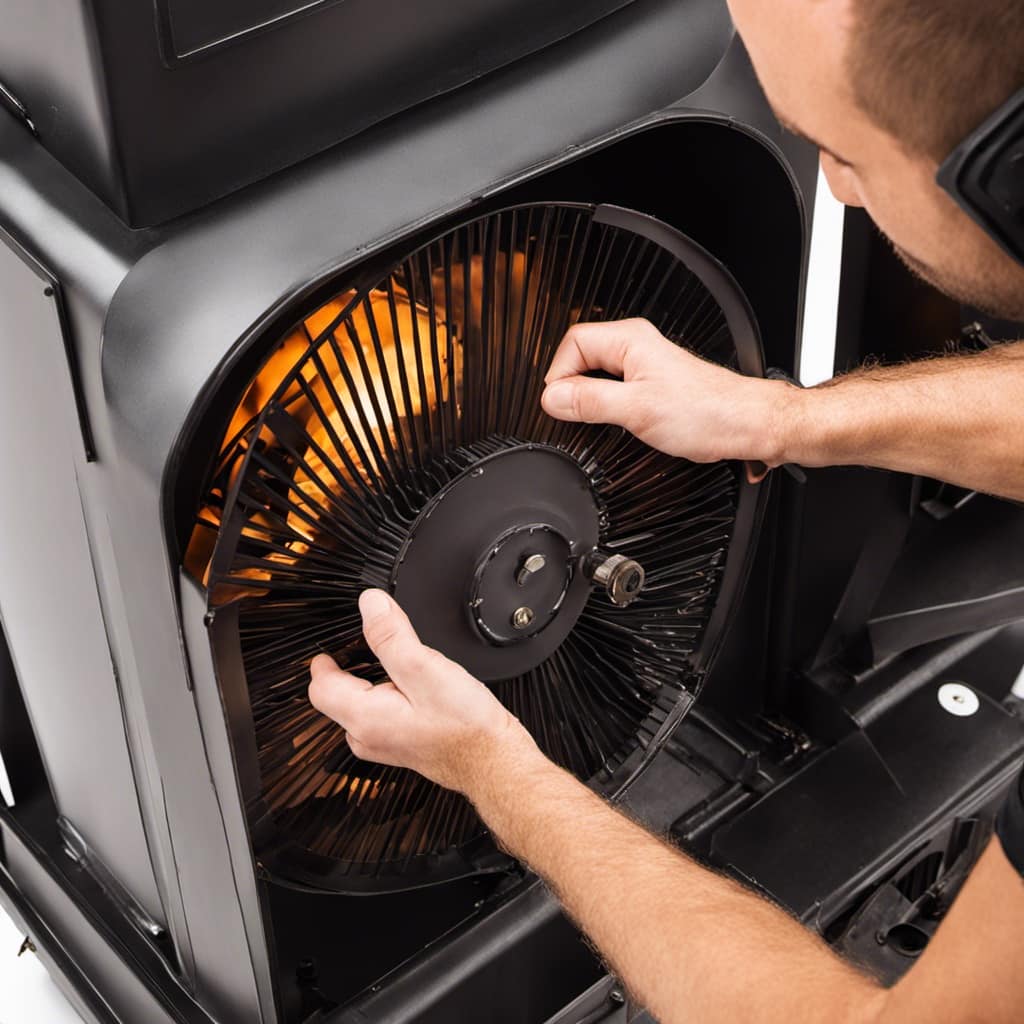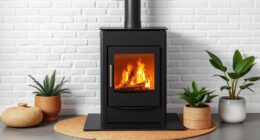Have you ever thought about ways to enhance the efficiency of your wood-burning stove?
Well, let me introduce you to the heat saver. This ingenious device is designed to maximize heat output and minimize heat loss in your wood stove.
By capturing and circulating the heat that would otherwise be wasted, a heat saver can significantly reduce your heating costs and create a more comfortable living space.
In this article, I will delve into the workings of a heat saver and explore the various benefits and types available.
Key Takeaways
- A heat saver in a wood stove is a device designed to increase efficiency and effectiveness.
- It captures and reuses heat that would otherwise be lost through the chimney.
- Benefits of using a heat saver include reduced fuel consumption, improved heat distribution, environmental friendliness, and increased safety.
- Heat exchangers are the most common type of heat saver for wood stoves, and they increase the amount of heat delivered into the room.
How Does a Heat Saver Work in a Wood Stove
I always wonder how a heat saver works in my wood stove.
A heat saver, also known as a heat exchanger or a heat reclaimer, is a device designed to increase the efficiency and effectiveness of a wood stove by capturing and reusing the heat that would otherwise be lost through the chimney.
The heat saver is typically installed in the flue pipe of the stove and consists of a series of metal tubes or plates. As the hot smoke passes through the heat exchanger, the metal absorbs the heat and transfers it to the surrounding air.
This heated air is then circulated back into the room, providing additional warmth.
The advantages of a heat saver are twofold. Firstly, it helps to reduce energy waste by recovering and utilizing heat that would otherwise be wasted. Secondly, it improves the effectiveness of the wood stove by increasing its heat output, allowing for more efficient heating of the space.
Overall, a heat saver is an effective and beneficial addition to any wood stove.
Benefits of Using a Heat Saver in Your Wood Stove
Using a heat saver in my wood stove has significantly increased the efficiency and warmth in my home. The cost effectiveness of heat savers in wood stoves is undeniable.
Here are some benefits of using a heat saver:
-
Reduced fuel consumption: Heat savers help maximize the heat produced by the wood stove, allowing for a more efficient use of fuel. This translates to cost savings on fuel expenses.
-
Improved heat distribution: Heat savers ensure that the heat generated by the wood stove is evenly distributed throughout the room. This eliminates cold spots and provides a more comfortable living environment.
-
Environmental friendliness: By improving the efficiency of the wood stove, heat savers reduce the amount of wood needed to produce the same amount of heat. This means fewer trees are cut down, resulting in a positive environmental impact.
-
Increased safety: Heat savers help regulate the temperature of the wood stove, preventing it from overheating. This reduces the risk of accidents and potential damage to the stove.
Types of Heat Savers for Wood Stoves
The most common type of heat saver for wood stoves is a heat exchanger. It improves the efficiency of the stove by transferring heat from the stovepipe to the surrounding air. Heat exchangers for wood stoves are designed to capture and utilize the heat that’s normally lost through the stovepipe.
They consist of a series of tubes or fins that are connected to the stovepipe and allow the heat to be transferred to the surrounding air. These heat retention devices for wood stoves can significantly increase the amount of heat that’s delivered into the room, making the stove more efficient and reducing the amount of fuel needed.
By using a heat exchanger, you can make your wood stove more energy-efficient and save money on heating costs.
Now, let’s move on to the installation and maintenance of a heat saver in a wood stove.
Installation and Maintenance of a Heat Saver in a Wood Stove
Installing and maintaining a heat saver in my wood stove improves its efficiency and prolongs its lifespan. A heat saver is a device that maximizes the heat output of a wood stove by capturing and redistributing the heat that would otherwise be lost through the chimney. Here are some installation tips to ensure proper functioning of the heat saver:
- Choose the right size heat saver for your wood stove.
- Follow the manufacturer’s instructions for installation.
- Position the heat saver close to the stovepipe for optimal heat transfer.
- Regularly clean and inspect the heat saver to prevent blockage and ensure efficient operation.
Troubleshooting common issues with a heat saver includes:
- Checking for any blockages or obstructions in the heat saver.
- Ensuring proper airflow and ventilation around the heat saver.
- Verifying that the heat saver is properly connected to the stovepipe.
- Consulting the manufacturer or a professional if issues persist.
Tips for Maximizing the Efficiency of Your Heat Saver in a Wood Stove
I always make sure to regularly clean and inspect my heat saver to ensure maximum efficiency in my wood stove. Proper use of a heat saver in a wood stove is crucial to its performance.
One common mistake to avoid is using wet or unseasoned wood, as this can lead to excessive creosote buildup on the heat saver. This can reduce its effectiveness and increase the risk of chimney fires.
Another mistake is neglecting to clean the heat saver regularly. Over time, soot and debris can accumulate, obstructing airflow and reducing heat transfer. This can result in poor heating efficiency and increased fuel consumption.
Conclusion
In conclusion, a heat saver in a wood stove is a highly efficient device that helps to maximize the heat output and reduce energy wastage.
By trapping and circulating the heat within the stove, it ensures better heating performance and fuel economy.
An interesting statistic to note is that using a heat saver can increase the overall efficiency of your wood stove by up to 25%, resulting in significant cost savings and a more environmentally friendly heating solution.











